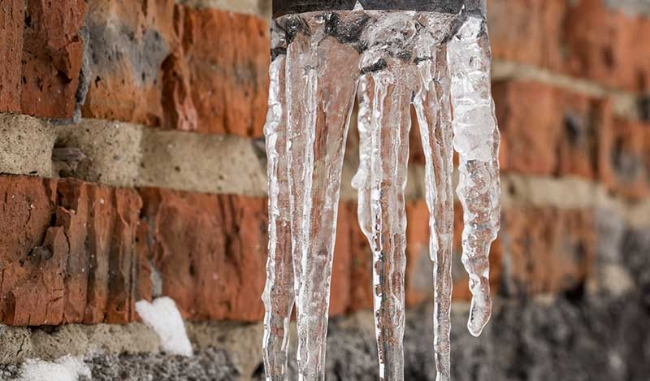How do you feel with regards to How To Avoid Freezing Pipes?
.jpg)
Winter can damage your pipes, specifically by freezing pipelines. Right here's how to stop it from occurring and what to do if it does.
Intro
As temperatures decrease, the threat of icy pipelines boosts, potentially leading to costly fixings and water damages. Recognizing just how to avoid frozen pipelines is critical for home owners in cool environments.
Avoidance Tips
Protecting vulnerable pipelines
Cover pipes in insulation sleeves or make use of warm tape to protect them from freezing temperatures. Concentrate on pipes in unheated or outside locations of the home.
Heating methods
Maintain interior spaces appropriately warmed, especially locations with pipes. Open up closet doors to enable cozy air to circulate around pipes under sinks.
How to identify icy pipes
Search for lowered water flow from faucets, uncommon odors or noises from pipelines, and noticeable frost on subjected pipelines.
Long-Term Solutions
Architectural modifications
Take into consideration rerouting pipelines far from outside wall surfaces or unheated areas. Include added insulation to attic rooms, basements, and crawl spaces.
Updating insulation
Invest in top notch insulation for pipes, attic rooms, and wall surfaces. Appropriate insulation assists keep regular temperature levels and decreases the risk of icy pipelines.
Protecting Outdoor Pipes
Garden hoses and exterior faucets
Disconnect and drain pipes garden tubes prior to winter. Mount frost-proof faucets or cover outside faucets with insulated caps.
Understanding Frozen Pipelines
What causes pipelines to ice up?
Pipelines ice up when subjected to temperatures below 32 ° F (0 ° C) for prolonged durations. As water inside the pipes freezes, it expands, taxing the pipeline wall surfaces and potentially causing them to break.
Dangers and problems
Frozen pipes can lead to water supply disturbances, residential property damage, and pricey repair services. Ruptured pipes can flooding homes and cause substantial architectural damages.
Indicators of Frozen Water Lines
Determining icy pipelines early can prevent them from rupturing.
What to Do If Your Pipelines Freeze
Immediate activities to take
If you believe icy pipelines, maintain taps available to relieve pressure as the ice thaws. Use a hairdryer or towels soaked in hot water to thaw pipelines gradually.
Final thought
Preventing icy pipes requires proactive actions and fast feedbacks. By recognizing the reasons, indicators, and preventive measures, home owners can protect their pipes during cold weather.
6 Proven Ways to Prevent Frozen Pipes and Protect Your Home
Disconnect and Drain Garden Hoses
Before winter arrives, start by disconnecting your garden hoses and draining any remaining water. Close the shut-off valves that supply outdoor hose bibs and leave the outdoor faucet open to allow any residual water to drain. For extra protection, consider using faucet covers throughout the colder months. It’s also important to drain water from any sprinkler supply lines following the manufacturer’s directions.
Insulate Exposed Pipes
Insulating your pipes is an effective way to prevent freezing. Pipe insulation is readily available at home improvement stores and is relatively inexpensive. Pay close attention to pipes in unheated areas such as the attic, basement, crawl spaces, or garage. Apply foam insulation generously to create a buffer against the cold. You can also wrap your pipes in heat tape or thermostat-controlled heat cables for added warmth.
Seal Air Leaks
Inspect your home for any cracks or openings that could let in cold air. Seal any holes around the piping in interior or exterior walls, as well as the sill plates where your home rests on its foundation. Additionally, make sure to keep your garage door closed unless you’re entering or exiting. Leaving it open creates a significant air leak that can lead to frozen pipes.
Allow Warm Air Circulation
During cold snaps, it’s essential to allow warm air to circulate evenly throughout your home. Leave interior doors ajar to promote better airflow. Open kitchen and bathroom cabinets to help distribute heat consistently around the rooms. If you have small children or pets, be sure to remove any household chemicals or potentially harmful cleaners from open cabinets for safety.
Let Faucets Drip
A small trickle of water can make a big difference in preventing ice formation inside your pipes. When temperatures drop significantly, start a drip of water from all faucets served by exposed pipes. This continuous flow helps prevent the water from freezing. Additionally, running a few faucets slightly can relieve pressure inside the pipes, reducing the chances of a rupture if the water inside does freeze.
https://choateshvac.com/6-proven-ways-to-prevent-frozen-pipes-and-protect-your-home/

We had been introduced to that write-up about Winter Plumbing Precautions: Preventing Frozen Pipes through a pal on a different website. If you please take the opportunity to distribute this article if you enjoyed it. I praise you for your time. Kindly visit our blog back soon.
Apply Now
Comments on “Preventing Frozen Plumbing: Best Methods for Cold Weather”